Non-contact electric vehicle charging method analysis
The charging device of the electric vehicle is equivalent to the filling station of the automobile fuel, and can provide the energy of the continuous operation of the vehicle through repeated charging. When the country began to build cable charging piles and charging stations in a big way, three kinds of non-contact electric vehicle charging devices emerged in foreign countries, and entered commercial operation to varying degrees. What types of non-contact charging devices are there? What is the basic working principle? How is its charging efficiency, safety and convenience? These are all people's concerns.
This article refers to the address: http://
Type of non-contact charging device
The non-contact charging device has three modes: electromagnetic induction, magnetic resonance, and microwave.
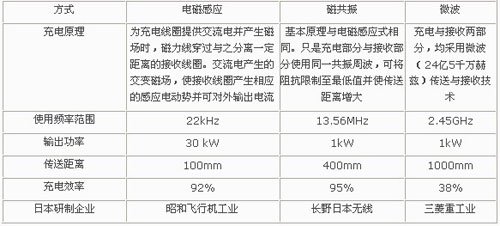
Advantages of non-contact charging devices
Compared with electric vehicles, traditional fuel vehicles not only have many advantages in terms of convenience, maintenance quality, driving capacity, manufacturing and use cost, but also do not need to spend more time when refueling.
The electric vehicle not only has a long charging time, but also replaces the battery or uses a charging pile or the like to charge through a cable, etc., and there is indeed an inconvenience in operation. And the safety of rainy days is even more worrying.
The non-contact charging device does not require a cable to connect the vehicle to the power supply system, so it can be quickly charged directly. In addition, non-contact fast charging can be arranged in parking lots, houses, roadsides, etc., and can provide charging services for various types of electric (including external charging hybrid) vehicles, making it possible for electric vehicles to be charged anywhere, anytime. . For buses, charging facilities can be placed at terminals, hub stations, transfer stations, etc., and fast charging can be completed with a short parking time.
How non-contact charging devices work
First, the electromagnetic induction method
Electromagnetic induction transmits power between the power transmitting coil and the receiving coil, which is the closest practical charging method. When an alternating current passes through the power transmitting coil, an alternating magnetic flux is generated between the transmitting (primary) and receiving (secondary) coils, thereby generating an induced electromotive force that varies with the magnetic beam in the secondary coil, passing through the receiving coil terminal. Output alternating current.
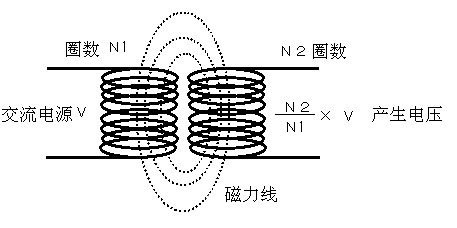
a) Basic principles of power transmission
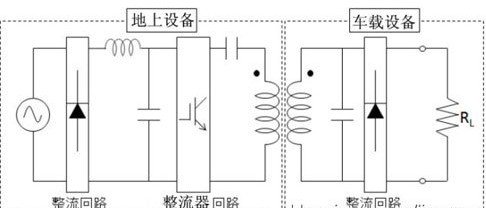
b) actual wiring method
The basic working principle of electromagnetic induction
The current problem is that the power transmission distance is relatively short (about 100mm or so), and when there is a large deviation between the power transmission and the receiving part, the power transmission efficiency will be significantly reduced; the power size is directly related to the coil size, and high power is required. When transmitting electricity, it is necessary to increase investment in infrastructure construction and power equipment.
Second, the magnetic resonance method
The magnetic resonance transmission method was successfully developed by the Massachusetts Institute of Technology (MIT) in 2007. Since its publication in the world, it has been receiving widespread attention from all over the world.
It is mainly composed of main parts such as power supply, power output, power receiving, and rectifier. The basic principle is basically the same as the electromagnetic induction method. When a current is passed through the power transmission portion, the generated alternating magnetic flux causes the receiving portion to generate an electric potential to output a current when the battery is charged.
The difference is that the magnetic resonance method is equipped with a high-frequency driving power supply, and an LC resonance circuit having both a coil and a capacitor is used, and the two units of the power transmission and reception are not constituted by a simple coil.
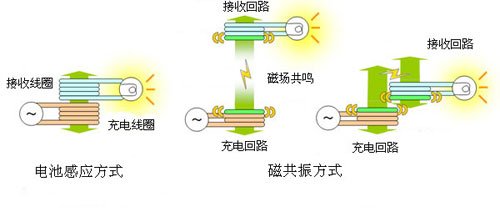 The basic working principle of magnetic resonance
The basic working principle of magnetic resonance The value of the resonant frequency changes as the distance between the power transmitting and receiving units changes. When the transmission distance changes, the transmission efficiency will also decrease as quickly as the electromagnetic induction. To this end, the resonant frequency can be adjusted by the control circuit so that the circuits of the two units resonate, that is, "resonate". Therefore, this magnetic resonance state is also called "magnetic resonance".
By changing the frequency of transmission and reception under the control loop, the power transmission distance can be increased to several meters, and the resistance of the two-unit circuit can be minimized to improve the transmission efficiency.
Of course, the transmission efficiency is also related to the diameter of the transmitting and receiving electrical units, and the larger the transmission area, the higher the transmission efficiency. The current transmission distance can reach about 400mm, and the transmission efficiency can reach 95%.
Third, the microwave mode
The power is transmitted using a 2.45 GHz radio wave generating device, and the transmitting device is basically the same as the "magnetron" used in the microwave oven. The transmitted microwave is also an alternating current wave, which can be received by the antenna in different directions, converted into a direct current by a rectifying circuit to charge the car battery, and can realize long-distance transmission from one point to multiple points.

Microwave mode can transmit long distances from one point to multiple points
In order to prevent microwave leakage during charging, the charging part is provided with a metal shielding device. In use, effective shielding between power transmission and reception prevents microwave leakage.
The main problem currently exists is that the efficiency of the magnetron when generating microwaves is too low, causing a lot of power to become thermal energy to be consumed in vain.
Application of non-contact charging device in Japan
In July 2009, Nissan and Showa Flight Company disclosed an electromagnetic induction type non-contact charging system with a transmission distance of about 100 mm and a transmission efficiency of 90%.
However, when there is a deviation in the parking position and a large error occurs between the transmitting and receiving disks, the power transmission efficiency is seriously affected. At present, the horizontal and vertical deviations of parking are being worked in the range of 200 to 300 mm, and it is also ensured that it has a transmission efficiency of more than 90%.
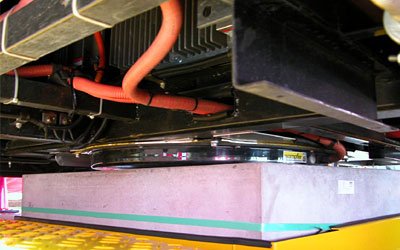
a) Charging working state, the upper part is the car part, the lower part is the transmitting part

b) Vehicle receiving device assembly
Electromagnetic induction type non-contact charging device developed by Showa Flight Machine Co., Ltd.
In addition, the above two companies have also studied the adverse effects of animals and metal fragments between transmission and reception. Because such foreign matter can cause eddy currents between the two, which causes heat generation and affects transmission efficiency.
Nagano Japan Wireless Co., Ltd. announced the development of a magnetic resonance-based charging system in August 2009. Compared with the electromagnetic induction method, the magnetic resonance method has the advantages of long transmission distance and low parking error requirement. It is possible to ensure 90% transmission efficiency over a transmission distance of 600 mm. However, the current transmission power is still relatively small (about 1 kW or so), and it is planned to enter the market from the scope of use of forklifts. With the maturity of technology and the increase of transmission power, it is expected to enter the field of electric vehicle charging.
The microwave non-contact charging system developed by Mitsubishi Heavy Industries Co., Ltd. uses a group of 48 silicon rectifier diodes as receiving antennas. Each silicon rectifier diode can generate 20V voltage and a certain DC power, which can raise the voltage to the required index for charging and A power output of 1 kW can be achieved. The advantage is that the cost is low, and the whole set of costs is about RMB 20,000. The disadvantage is that the transmission efficiency is low, and the current transmission efficiency is only 38%. In this regard, Mitsubishi Heavy Industries believes that: “Although it is not suitable for fast charging, as a nighttime valley charging, the electricity cost is only 10% to 20% of the traditional fuel cost. If the excessively large magnetron is used for domestic water heating, then comprehensive The efficiency can reach 70%. In addition, there is also a microwave leakage prevention device in terms of safety, which does not affect the electronic devices on the vehicle and the pacemakers on the surrounding personnel.
Once the non-contact charging method was introduced, it has received widespread attention from all over the world, and it is also worth learning and learning from domestic counterparts. Compared with the construction investment of charging station and charging pile, the cost is lower, and the operation and waiting time required for wiring are eliminated, and the absolute advantages such as flexible arrangement, convenient use, safety and reliability are provided.
Stylus Pen For Microsoft Surface
Product catagories of Stylus Pen For Microsoft Surface, which just can be worked on below Surface model, Please confirm your surface model before buying.
Microsoft Surface 3; Microsoft Surface Pro 3; Microsoft Surface Pro 4; Microsoft Surface Pro 5; Microsoft Surface Pro 6; Microsoft Surface Book; Microsoft Surface Laptop; Microsoft Surface Studio.
Stylus Pen For Microsoft Surface,Tablet Touch Pen,Touch Screen Stylus Pen,Universal Stylus Pen
Shenzhen Ruidian Technology CO., Ltd , https://www.wisonen.com